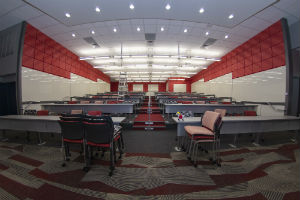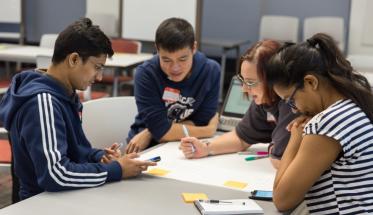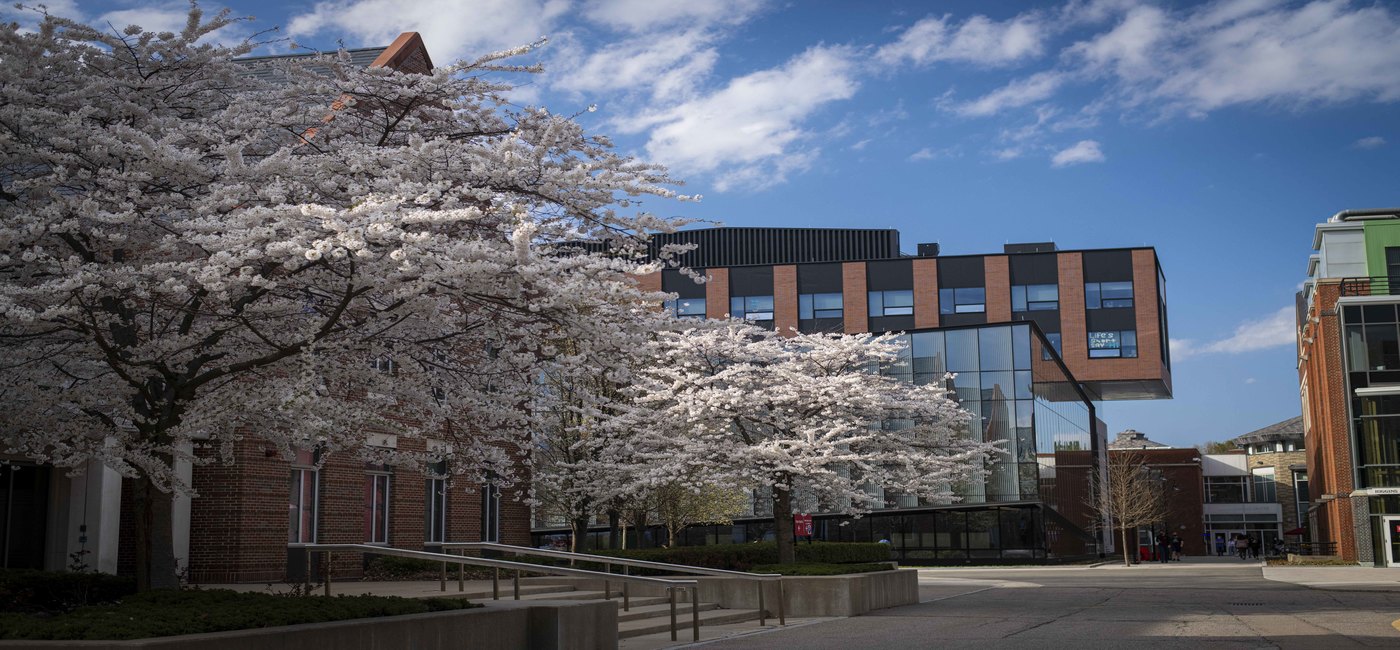Sitting in a lecture hall isn’t all it’s cracked up to be. Active learning classrooms, where chairs are moved around and student groups write on the walls, offer a new way of working with information so that it becomes memorable.
“The classic definition of active learning is instruction that engages students in their learning,” says Chrysanthe Demetry, director of the Morgan Teaching & Learning Center and a mechanical engineering professor. As a counterpoint to what’s traditionally known as the transfer style of learning (teachers transfer a body of knowledge to the students who absorb it and transfer it back as proof they have learned the information), active learning requires a student-centered learning experience.
“Historically in science and engineering, it was thought that we could learn by listening to someone passively,” says Demetry. “The social dimension of learning is that we learn more readily when we interact with people around us. We can’t be passive learners.”
In response to this growing realization, WPI established active learning classrooms in the Foisie Innovation Studio and redesigned Kinnicutt Hall in Salisbury Labs (also known as Salisbury 115).
Active Learning Takes Many Forms
Demetry says active learning is varied and can be as expansive as a long-term project or as simple as a two-minute class wrap-up in which students are asked to review their notes and come up with questions. “It’s asking students to do something on their own,” she says.
As with any transition, there are adjustments. Faculty members who have taught traditional lectures can find the lack of a classroom front disconcerting. In active learning classrooms, they often walk around the room with a mic (and sometimes even carrying a mic for students), lecturing and interacting.
“The vast majority of students really value being given the opportunity to apply what they are learning in class, to ask questions and get feedback, and to be challenged,” says Demetry. However, she adds, some students have raised concerns. For example, they now must find a new way to feel settled with a professor who could appear at their shoulder at any given point. Some students find they do not know where to focus when the person leading the class is moving around. And faculty members note how some students say they prefer to just take notes and not interact with others or they are unsure what is expected of them.
Those curious to know how others are using the new classrooms and what methods are most effective meet in a Community of Practice group. Attracting staff from areas such as the Gordon Library and the Academic Technology Center and faculty members of many disciplines, the group meets regularly to discuss their experiences, challenges, and successes.
Trending in Higher Ed
“Active learning classrooms are a national movement to think about how the use of the combination of space, teaching methods, and technology can work together to create a powerful learning experience,” says Demetry, noting that there may always be a need for large lecture halls, but active learning classrooms provide an essential alternative.
And faculty members who have never used active learning classrooms are noticing nuances in student comprehension, she says. “You have a much better understanding of what students are learning and what they are struggling with. What they are learning becomes visible to everyone.”
Last summer brought the transformation of the Kinnicutt classroom in Salisbury Labs. Where there once was a traditional lecture hall, now there is a hybrid” classroom where students can turn their chairs 180 degrees to interact with students in front of them and behind them. The professor can move freely and teams collaborate and use the massive writing surfaces on the walls—a proven pedagogical method, says Demetry.
The studio-style classrooms in Foisie have no fixed seating, so seats can be arranged in whatever formations will fit—or there can be no seats at all. These classrooms offer an excellent set-up for the Great Problems Seminar and have been used for those interactive courses.
Jill Rulfs, a biology and biotechnology professor, has been teaching in the Foisie active learning classroom and appreciates the differences. “I have been teaching at WPI 30 years,” she says, “and it’s time I shake myself up, too. We have become aware there are better ways.”

One change she welcomes is better student interaction. “Students were in rows in lecture halls and when I asked the students to get into groups, it was hard for them to do that,” she says. “If one person in a row is speaking, the person on the other end can’t hear and is disengaged.”
Rulfs says she has noticed the students are asking different questions in the active classroom settings because they are doing different things. Recently a student raised a question that naturally evolved from the discussions happening in a class group. “That would have never happened in a lecture class,” she says. “It was in a different context for him.”
Active learning classrooms bring a new element to teaching, says Rulfs. “It’s way more fun.”
Up Close with Active Learning
- by Julia Quinn-Szcesuil




